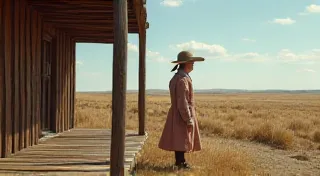‘Ben’s Dream’ by Ezra Jack Keats: Exploring Dreams and Imagination
Ezra Jack Keats is rightfully celebrated for his groundbreaking contributions to children's literature. While The Snowy Day remains his most recognizable work, 'Ben’s Dream' (1963) offers a different, even more fantastical glimpse into a child’s inner world. This often-overlooked book, a Caldecott Medal winner, provides a beautiful exploration of dreams, imagination, and the boundless possibilities held within a young mind.

The Story: A Journey Through Imagination
‘Ben’s Dream’ tells the simple yet profound story of a young boy, Ben, who falls asleep and embarks on a dreamlike adventure. As he sleeps, his bedroom transforms into a whimsical landscape filled with floating objects, vibrant colors, and fantastical creatures. Everything—his toys, furniture, even his beloved dog—takes on a new, extraordinary form. The dream is populated by fellow dreamers – a girl with rosy cheeks, a friendly bear, and other children—all enjoying the shared, dreamlike experience.
What sets this book apart is the deliberate blurring of reality and fantasy. Keats masterfully utilizes perspective and collage techniques to create a visually stunning experience, where the familiar becomes wonderfully strange. The story isn't driven by a plot; it's a sequence of dreamlike impressions, designed to immerse the reader in Ben’s imaginative world.
A Masterclass in Visual Storytelling
Keats’ illustrations are the heart of ‘Ben’s Dream.’ Using a combination of watercolor, collage, and mixed media, he creates a unique and captivating visual style. The dream sequences are portrayed with a vibrant palette and a sense of boundless energy. The use of collage—newspaper clippings, fabric scraps, and other unexpected materials—adds texture and depth to the illustrations, creating a dreamlike quality that enhances the story's surreal nature.
It’s important to note that Keats' use of mixed media was fairly groundbreaking for children’s literature at the time. He wasn’t simply illustrating a story; he was creating a visual dreamscape that engaged the reader's senses and imagination.

Historical Context and Significance
Published in 1963, ‘Ben’s Dream’ arrived during a period of significant change in children’s literature. While picture books often focused on simple narratives and predictable outcomes, Keats’ work embraced a more experimental and artistically driven approach. The book’s focus on imagination and dreamlike experiences offered a refreshing alternative to more traditional stories.
Furthermore, Keats, who was one of the first African American illustrators to achieve widespread recognition, consistently featured African American children in his books, offering important representation for young readers. While 'Ben's Dream' doesn't overtly address racial themes, its representation of a young boy, Ben, and his friends provided a subtle, yet powerful message of inclusivity and belonging.
Why ‘Ben’s Dream’ Remains Relevant
Despite being over six decades old, ‘Ben’s Dream’ continues to resonate with readers of all ages. Its exploration of imagination and the power of dreams is timeless. The book's visual appeal and its embrace of artistic experimentation make it a valuable addition to any children’s literature collection.
It’s a reminder that the most powerful stories are often those that spark the imagination and encourage children to explore the boundless possibilities within themselves. ‘Ben’s Dream’ isn't just a story; it’s an invitation to dream.






